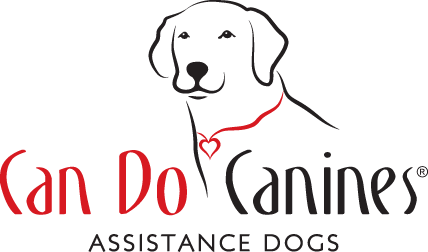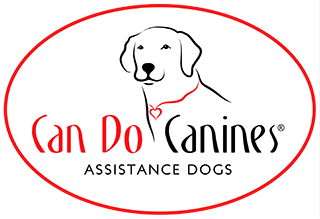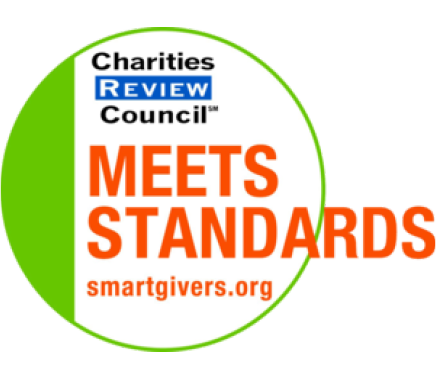Strive for progress, not perfection.
This truly should be your motto regardless of where you are in your journey with your assistance dog (AD). You may be a team with many years experience behind you, or a team that is just starting out. We do not expect perfection with our teams. We expect that you and your AD continue to grow as a team, getting better and better with time and lifelong practice.
This document was designed to help you continue to grow in your teamwork and help you best support your AD. It is not a manual on how to best get your AD to perform his/her tasks, but how to best set yourselves up for success.
Considerations
Expectations
- Setting expectations too high: Be realistic in your goals. Are you asking your AD for a skill that they have not been taught?
- Setting expectations too low: Are you asking your AD to perform a task that is second nature to them? Did you accept a B performance when they usually give you an A+?
- Setting expectations to just right: It is important to continue to challenge yourself as a team, starting with what your AD knows, then making the task a little harder in small increments.
Attitude
Be your dog’s emotional anchor.
We can use our attitude to get others, including our dogs, in sync with us. When we’re in sync, we work as a team and can do incredible things. There are three attitudes to have when handling your dog: Happy, Happier, Happiest!
Sometimes we have to adjust our attitude before picking up the leash, which is our physical connection to our dog. Think of what energy you’re sending through the leash!
Environment
Take a look around you. Are you in an environment that sets yourself up for success with where you are training as a team? Stressful, new or busy environments can make a big difference in performance for you and your dog.
Communication
Communication includes both what your AD is telling you and what you are trying to tell your AD.
- Dogs communicate through body language cues, not words.
- Look at: eyes, ears, mouth, nose, posture, tails and body orientation.
- Dogs may give several cues at once, so make sure to look at the “big picture.”
When YOU are using your words/verbal cues:
- Be sure you have the dog’s attention first.
- Give clear, short commands and only say them once (wait 3 seconds for response).
- Use good intonation.
- Give praise!
Training Guidelines
Setting and Achieving Goals
Envision an ideal behavior/situation, break it down into parts, and break those down into plans.
Knowing what your goal is will help get you there! To build on a behavior, you begin with a foundation of success. This means you start with something you know the dog can do well. Then each step taken towards the goal will add on to the one before. The trick is to make the steps so incremental, that the dog experiences a high rate of success while still learning new things!
- Change ONE variable at a time (distance, duration, speed, distractions, reinforcement, etc.).
- Advance to next step after an 80% success rate of behavior at current step (4/5 times right).
- If training is frustrating for you, it’s frustrating to your dog. You may have to take a step or two back in training to find success again, and there may even be plateaus in progress. These are the times to evaluate the current plan and tweak things as needed.
- Proficiency comes quickly for humans and dogs. Remember that mastery of behaviors across all situations takes time.
Success, Error, and Timing
If it worked, I’ll do it again. If it didn’t, I won’t! ~All Dogs
- Success
- Watch for success, mark with a “Yes!” in training or “Good dog” while out working.
- Create successes by using good communication skills and considering your dog’s perspective.
- Ask for behaviors only when you feel the dog has a reasonable chance of succeeding.
- Error
- Error is an important part of learning. Meet and greet errors positively as an opportunity.
- Move immediately to success - either take a step back or ask for an easy behavior.
- NEVER leave your dog conflicted, always end on a good note.
- Don’t hold grudges! Errors will happen. They are never intentional or malicious on your dog’s part.
- Timing
-
- Dogs live in the present; mark successes and errors immediately.
- When your timing is good, your dog will learn and build strong associations.
- Be proactive in rewarding success, don’t wait for a mistake to correct.
-
Consistency and Variety
Consistency comes first
There is safety in consistency.
Consistency is needed to build trust. It creates a stockpile of positive experiences to counter possible future bad experiences. consistency is used when learning something new and it can help recovery from confusion.
Having consistency helps you anticipate what will happen next. Understanding this helps in identifying and building patterns.
Variety adds interest
Variety grabs attention and adds an element of surprise! Variety is used when building on and maintaining existing skills. It is crucial to include variety in training as reasonable challenges and growing understanding of concepts, but also to adding enrichment. Remember to maintain predictability and criteria while considering variety.
Motivation
Knowing and understanding your dog’s motivations creates value in your relationship.
- No one works for free. Learn your dog’s unique “paycheck” to reinforce training.
- Discover alternative ways to motivate your dog, from high-value “bonuses” to lower-value recognition.
- Value of the reward to the dog can then correlate with the difficulty of the task or training situation.
- Rewards motivate because they are special! Having a high value toy accessible all the time will decrease the value.
Distraction
Distractions are a part of life!
- Respond to distractions by supporting your dog.
- In the moment: create distance, give your dog time to process, give positive feedback for relaxing (watch body language). Distracted behavior may be a sign of stress!
- Through training: Doggy Zen, help your pup resolve the conflict they are experiencing with shaping.
- Teach that distractions are a natural occurrence are not cause for reaction.
- Identify where their threshold is (how close they can get to ____ before you lose their attention).
- Distractions can be attractions! Sometimes, you may use a distraction as a motivation or reward.
- Passing by mud puddles (distractions) may earn a roll in one (reward).
Needs
Your dog can only reach their full potential when their basic needs are met. When things aren’t right, ask yourself: “Have my dog’s needs been met?”




